
Earth is the only known planet in our solar system that is capable of supporting life. It's the third planet from the Sun and has a diameter of approximately 12,742 kilometers. But how did Earth get its name?
The Origin of the Word "Earth"

The word "Earth" comes from the Old English word "eorðe" which means "ground" or "soil." But the name of our planet has deeper roots in mythology. In many cultures, Earth is personified as a goddess, such as Gaia in Greek mythology and Terra in Roman mythology.
Early Understanding of Earth
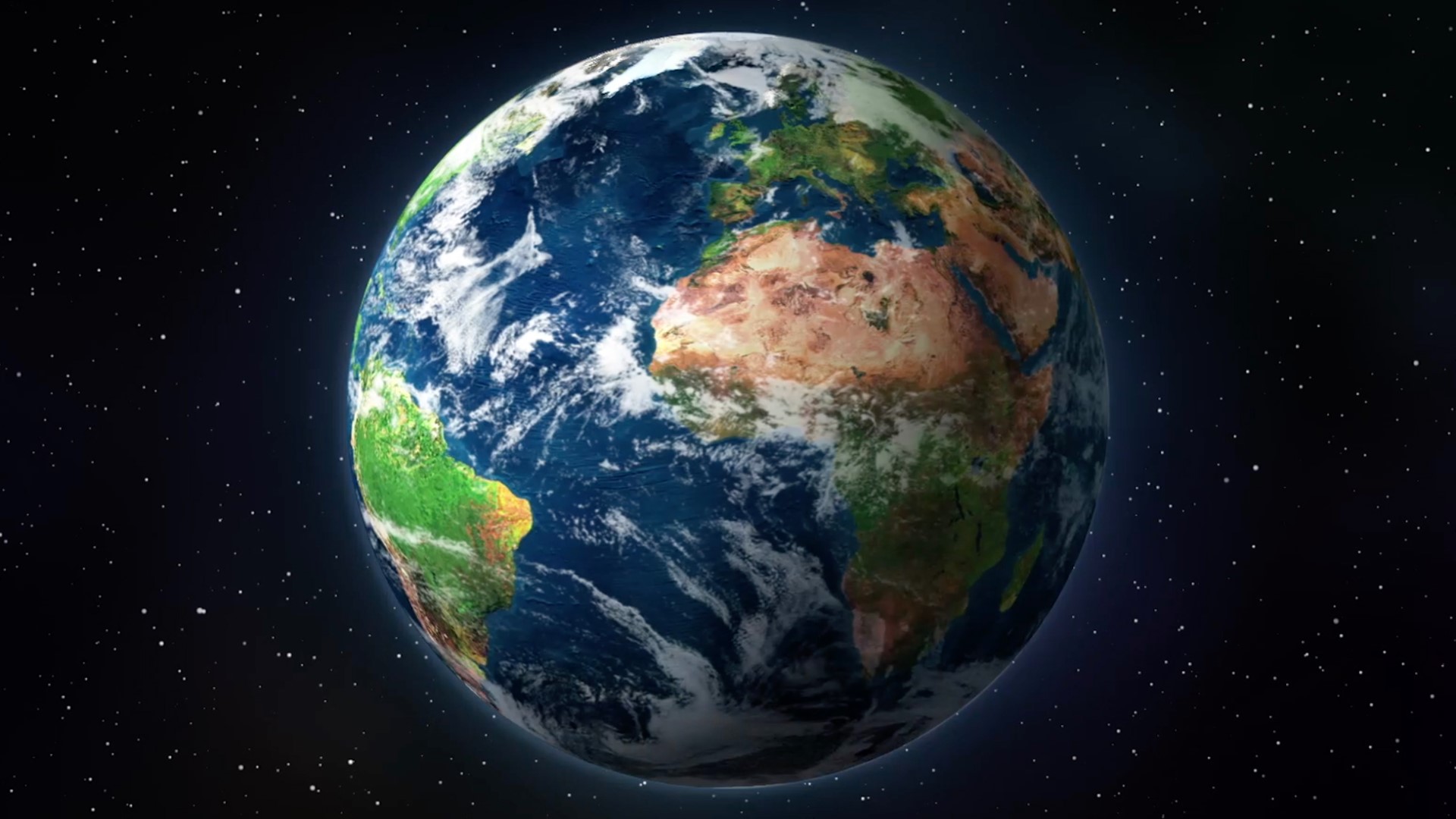
Ancient cultures did not have the scientific understanding of the Earth that we have today. They believed that the Earth was the center of the universe and that the Sun, Moon, and stars revolved around it. It wasn't until the 16th century that Nicolaus Copernicus proposed the heliocentric model of the solar system, which placed the Sun at the center and the planets, including Earth, revolving around it.
The Naming of the Planets

The naming of the planets in our solar system can be traced back to ancient civilizations. The five planets that are visible to the naked eye – Mercury, Venus, Mars, Jupiter, and Saturn – were named after Roman gods. Uranus, Neptune, and Pluto were only discovered in modern times and were named after Greek and Roman gods.
Who Named Earth?
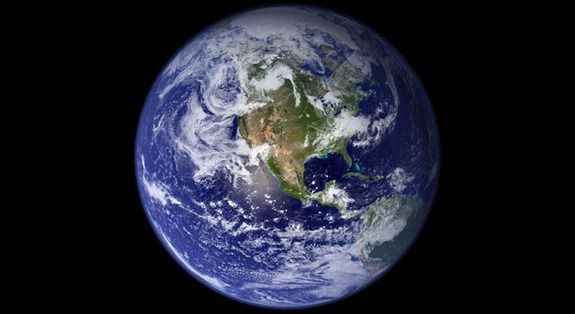
It's unclear who exactly named Earth. The name has been used for centuries, and it's likely that it was simply adopted as the name of our planet over time. The first known use of the word "Earth" to refer to our planet was in the 9th century.
The Importance of Earth
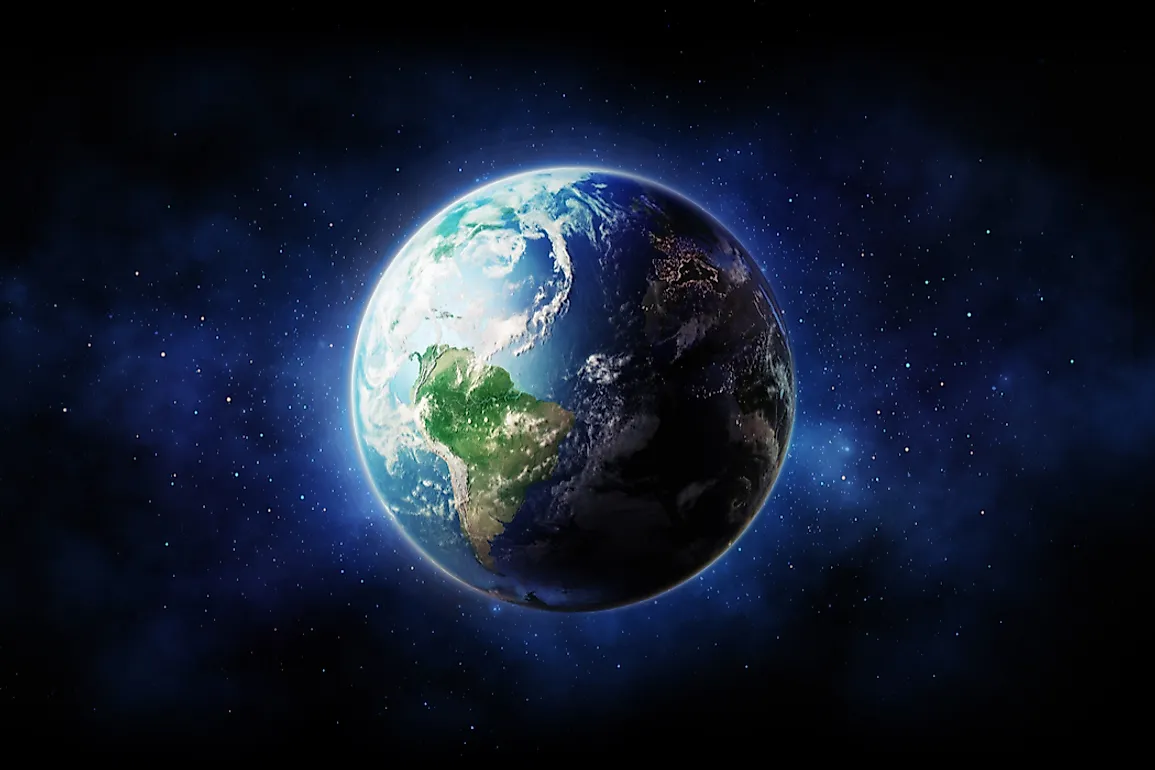
Earth is a crucial planet for life as we know it. It has the right combination of factors – including a stable climate, liquid water, and a protective atmosphere – that make it possible for life to thrive. Earth is also the only planet in our solar system that has a magnetic field, which protects it from harmful solar radiation.
Conclusion
The name of our planet, Earth, has roots in both language and mythology. While it's unclear who exactly named Earth, the name has been used for centuries and has become synonymous with the planet we call home. Earth is a unique and important planet, and it's up to us to protect and preserve it for future generations.
Related video of How Did Earth Get Its Name?

Introduction
Dean Paul Martin Jr. was an American singer, actor, and a pilot who was born on November 17, 1951. He was the son of the legendary singer and actor Dean Martin. He followed his father's footsteps and became a prominent personality in the entertainment industry. However, his life ended tragically when he died in a plane crash.
The Early Life of Dean Martin Jr.
Dean Martin Jr. was born in Santa Monica, California. He grew up surrounded by his father's celebrity friends, including Frank Sinatra, Sammy Davis Jr., and Peter Lawford. He attended Beverly Hills High School and later went to the University of Southern California, where he played football.

Dean Martin Jr's Career
Dean Martin Jr. started his career in the entertainment industry as a singer. He recorded several albums, including "Beau James" and "The Entertainer." He also appeared in a few movies, including "Players" and "The Last Survivors." Besides this, he was also a pilot and flew his own planes.
The Tragic Death of Dean Martin Jr.
On March 21, 1987, Dean Martin Jr. died in a tragic plane crash near San Gorgonio Mountain in California. He was flying a military jet, which he had purchased after leaving the Air National Guard. The cause of the crash was due to poor weather conditions and the pilot's lack of experience flying in such conditions.
The Aftermath of Dean Martin Jr's Death
Dean Martin Jr's death was a shock to his family, friends, and fans. His father, Dean Martin, was devastated by the death of his son and never fully recovered from the loss. In honor of his son, he established the Dean Paul Martin Memorial Scholarship Fund, which provides scholarships for young pilots.
Conclusion
Dean Martin Jr. was a talented performer and a beloved son. His sudden death was a tragedy that left a lasting impact on those who knew and loved him. Although he is no longer with us, his legacy lives on through his music and the scholarship fund established in his honor.
Related video ofHow Did Dean Martin Jr Die

Carrots are one of the most popular vegetables in the world. They are often associated with their bright orange color, which is now considered their standard color. But have you ever wondered how carrots became orange?
The Original Color of Carrots

The original color of carrots was not orange, but purple, white, and yellow. These colors were the result of the different pigments present in the carrot roots. Purple carrots, for example, contained anthocyanin, a pigment that gives plants their purple color. White carrots were devoid of any pigment, while yellow carrots contained xanthophylls, a yellow pigment.
The Dutch and the Orange Carrots

The orange color of carrots is a result of selective breeding. In the 16th century, Dutch farmers developed orange carrots by selectively breeding yellow and white carrots. The orange color was a tribute to the Dutch royal family, the House of Orange-Nassau. Orange carrots were popular in the Netherlands and spread throughout Europe.
Carrots in America

Carrots were brought to America by European settlers in the 17th century. However, the orange carrot did not become popular in America until the 19th century. At that time, many Dutch immigrants settled in the United States and brought with them their love for orange carrots.
Carrots Today
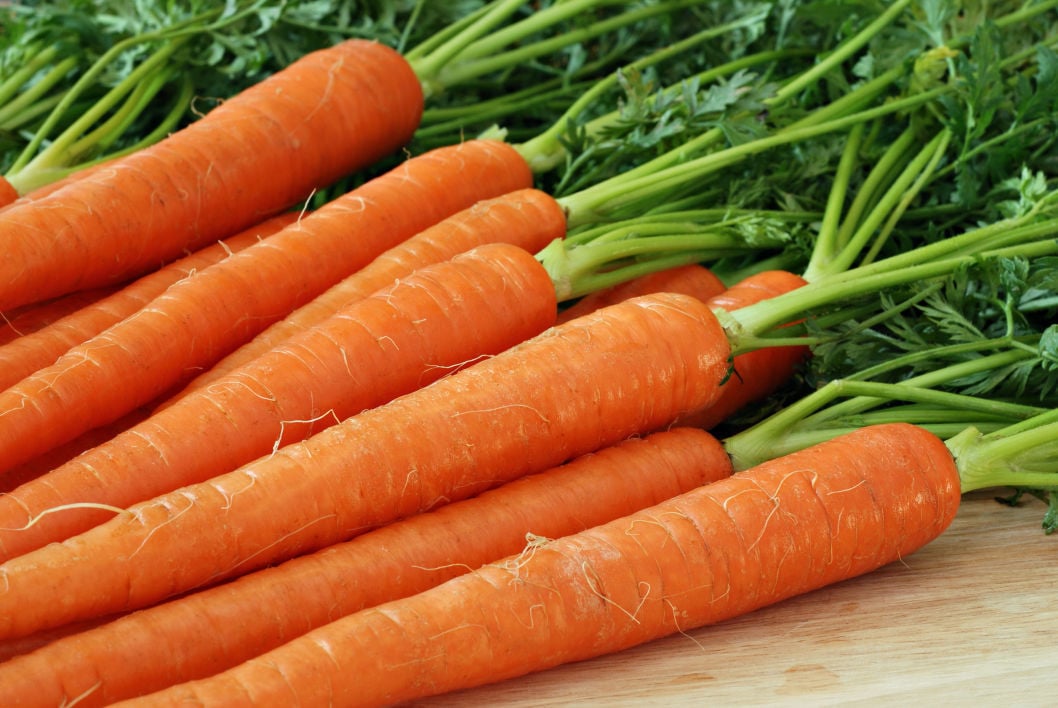
Today, orange carrots are the most common color of carrots. They are grown all over the world and are widely available in supermarkets. However, purple, white, and yellow carrots are still grown and enjoyed by many people. These varieties are often found in specialty markets and are prized for their unique colors and flavors.
Nutrition of Carrots

Carrots are a nutritious vegetable that is low in calories and high in fiber. They are an excellent source of vitamin A, which is essential for eye health. Carrots also contain vitamin K, potassium, and other important nutrients.
Carrots in Popular Culture
Carrots have been featured in popular culture, including literature, movies, and TV shows. Perhaps the most famous example of this is Bugs Bunny, the iconic cartoon character who loves to eat carrots. Carrots have also been used as a plot device in many stories, such as in the book "The Carrot Seed" by Ruth Krauss.
Conclusion
Carrots have come a long way from their original colors of purple, white, and yellow, to the bright orange color that is now considered their standard. The orange color of carrots is a result of selective breeding by Dutch farmers in the 16th century. Today, carrots are one of the most popular vegetables in the world and are widely available in supermarkets. Whether you prefer orange, purple, white, or yellow carrots, they are all nutritious and delicious.
Related video of How Did Carrots Become Orange

The Invention of Basketball
Basketball is a popular sport that is played all over the world. It is a fast-paced game that requires quick reflexes, agility, and teamwork. But have you ever wondered how basketball came about? The invention of basketball can be traced back to a man named James Naismith.
James Naismith was a Canadian physical education instructor who was looking for a new sport to keep his students active during the winter months. In December 1891, he came up with an idea for a game that would be played indoors and would require minimal equipment. He called this game "basketball."

The First Game of Basketball
The first game of basketball was played on December 21, 1891, at the International YMCA Training School in Springfield, Massachusetts. The game was played with a soccer ball and two peach baskets that were nailed to the gymnasium balcony. There were nine players on each team, and the goal was to throw the ball into the opposing team's basket. The team with the most points at the end of the game was declared the winner.
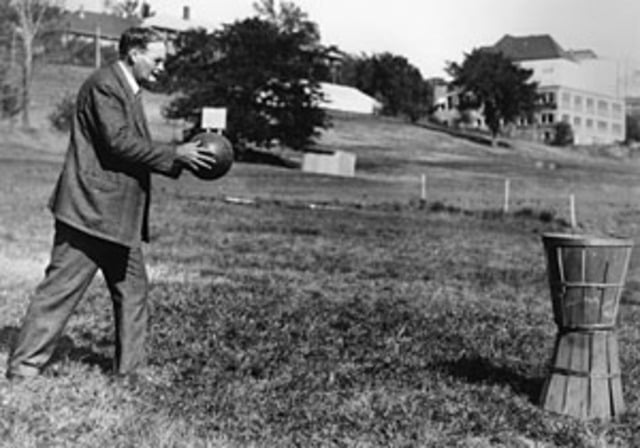
The Evolution of Basketball
Over the years, basketball has evolved into the game that we know and love today. The rules have been modified, and the equipment has been improved to make the game faster and more exciting. In 1932, the International Basketball Federation (FIBA) was founded to govern the sport globally.
The first professional basketball league was founded in the United States in 1898. Today, the National Basketball Association (NBA) is the most popular professional basketball league in the world, with teams from the United States and Canada.
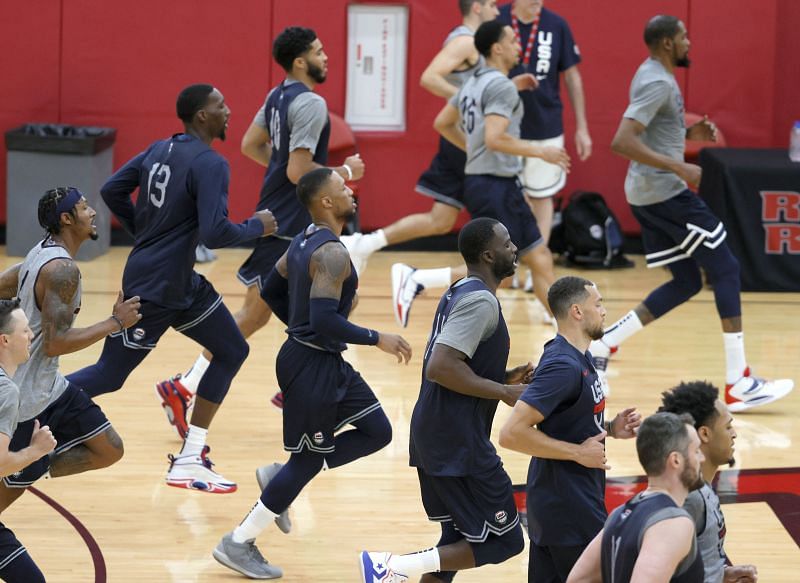
Basketball Around the World
Basketball is now played in over 200 countries around the world. It is a popular sport in many countries, including the United States, Canada, China, and Spain. The popularity of basketball has led to the creation of international competitions, such as the FIBA World Cup and the Olympic Games.

The Impact of Basketball
Basketball has had a significant impact on popular culture. It has inspired countless movies, TV shows, and songs. It has also been a source of inspiration for many people, including athletes and fans alike. Basketball has brought people together from all walks of life, and it has created a sense of community and camaraderie.
Overall, basketball is a sport that has stood the test of time. From its humble beginnings in a gymnasium in Massachusetts to its current status as a global phenomenon, basketball has brought joy and excitement to millions of people around the world.
Related video of How Did Basketball Come About?

The Thames River is one of the most iconic rivers in the world. It is a major waterway in Southern England that flows through London and into the North Sea. The river has been an integral part of the history and culture of England, and it continues to be an important source of water and transportation.
The Origin of the Thames River

The Thames River has its origins in the Cotswold Hills in Gloucestershire. The river begins as a small stream and gradually grows larger as it flows towards London. The Thames is fed by many tributaries along the way, including the River Kennet, the River Wey, and the River Lea.
The Length of the Thames River

The Thames River is approximately 215 miles long, making it the second longest river in the United Kingdom. The river flows through several major cities, including Oxford, Reading, Windsor, and London.
The Depth of the Thames River
The depth of the Thames River varies depending on the location and time of year. In some areas, the river is very shallow and only a few feet deep. In other areas, the river can be as deep as 25 feet. The average depth of the Thames River is around 15 feet.
The Tides of the Thames River

The Thames River is affected by tides from the North Sea, which can cause the water level to rise and fall by as much as 23 feet. The tides can make the river flow in either direction, which can be a challenge for ships and boats navigating the waterway.
The Bridges of the Thames River

The Thames River is famous for its many bridges, which span the waterway and connect the different areas of London. Some of the most iconic bridges include Tower Bridge, London Bridge, and the Millennium Bridge.
The Wildlife of the Thames River
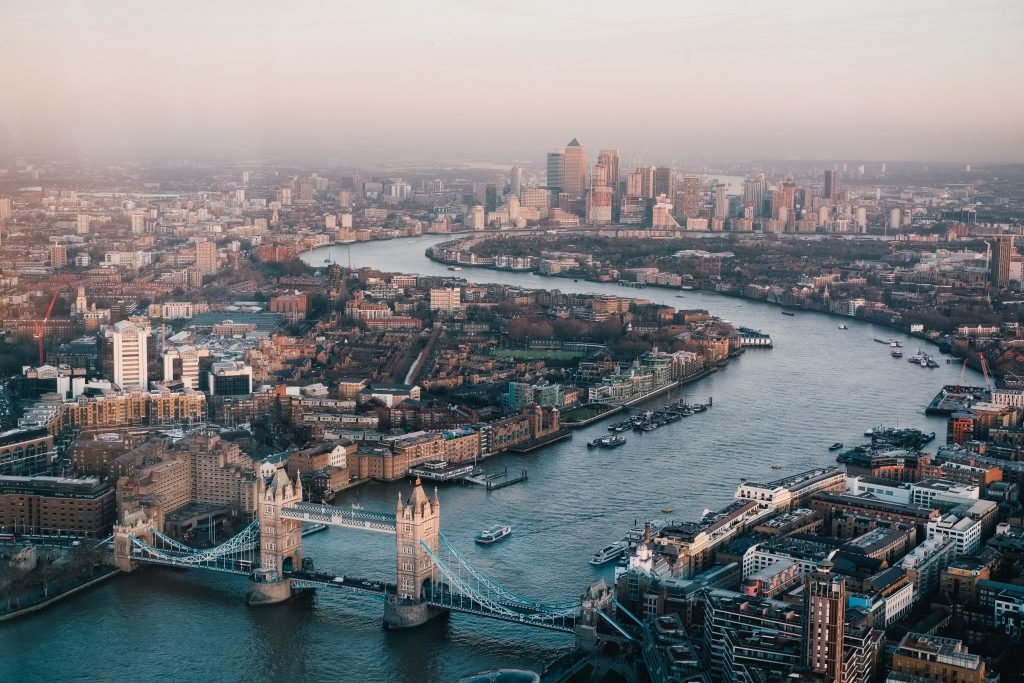
The Thames River is home to a wide variety of wildlife, including fish, birds, and mammals. Some of the most common species include salmon, trout, swans, and otters. The river also supports a thriving ecosystem of plants and algae.
The History of the Thames River
The Thames River has played an important role in the history of England for thousands of years. The river has been used for transportation, trade, and fishing since ancient times. It has also been the site of many important events, including the Great Fire of London and the Battle of Waterloo.
The Pollution of the Thames River

The Thames River has been polluted for many years, due to the high levels of industry and population in the areas surrounding the river. However, in recent years, there have been efforts to clean up the river and reduce pollution levels. The Thames is now much cleaner than it was in the past, and many species of wildlife have returned to the river.
The Future of the Thames River

The Thames River will continue to be an important part of the history and culture of England for many years to come. Efforts to clean up the river and reduce pollution levels will help to ensure that the river remains a vital source of water and transportation for future generations.
Conclusion
The Thames River is a fascinating and important waterway in Southern England. Its depth, length, tides, bridges, wildlife, history, pollution, and future all contribute to its rich cultural and environmental significance. Whether you are a tourist, a resident, or a scientist, the Thames River is a source of wonder and inspiration.
Related video of How Deep Is The Thames River

Colorblindness is a condition that affects millions of people worldwide. It is a visual impairment that makes it difficult or impossible to distinguish certain colors. The most common type of colorblindness is red-green colorblindness, which affects both men and women equally. In this article, we will explore how colorblind people see the world and how this condition affects their daily lives.
What is Colorblindness?
Colorblindness, also known as color vision deficiency, is a condition in which a person is unable to distinguish certain colors. This occurs when the cone cells in the retina of the eye, which are responsible for color vision, do not function properly. There are three types of cone cells, each of which responds to a different color: red, green, and blue.
People with colorblindness have a reduced ability to perceive certain colors or may see them differently than people with normal color vision. The most common types of colorblindness are red-green colorblindness and blue-yellow colorblindness.
How Colorblind People See the World?
People with colorblindness see the world differently than people with normal color vision. They may have difficulty distinguishing between certain colors or may see colors differently than they are. For example, someone with red-green colorblindness may have trouble distinguishing between red and green, while someone with blue-yellow colorblindness may have difficulty distinguishing between blue and yellow.
Colorblind people tend to rely on other visual cues, such as brightness or contrast, to distinguish between colors. They may also use context clues or ask others for help in identifying colors. Colorblindness can make certain tasks more difficult, such as reading color-coded charts or maps, choosing clothes that match, or identifying ripe fruits and vegetables.
Causes of Colorblindness
Colorblindness is usually an inherited condition, which means it is passed down from parents to their children. The genes that control color vision are located on the X chromosome, so colorblindness is more common in males than females.
Some people may develop colorblindness later in life as a result of certain diseases or medications. For example, people with diabetes or multiple sclerosis may develop color vision problems, as can those taking certain medications for high blood pressure, heart disease, or anxiety.
Treatment for Colorblindness
There is currently no cure for colorblindness, and most people with the condition learn to adapt to it. However, there are some tools and technologies that can help colorblind people navigate the world more easily. For example, colorblindness correction glasses or contact lenses can help people with red-green colorblindness see a wider range of colors. There are also smartphone apps that can help identify colors or provide color descriptions for people with colorblindness.
Living with Colorblindness
Living with colorblindness can be challenging, but most people with the condition learn to adapt to it over time. They may use strategies such as asking for help from others or relying on context clues to navigate the world. Some people may choose to use color-correcting glasses or contact lenses, while others may prefer to embrace their colorblindness as a unique aspect of their identity.
Overall, colorblindness is a condition that affects millions of people worldwide, but it does not have to limit a person's ability to live a fulfilling life. With the right tools and strategies, colorblind people can navigate the world just as effectively as those with normal color vision.
Conclusion
Colorblindness is a visual impairment that affects millions of people worldwide. It is a condition in which a person is unable to distinguish certain colors, most commonly red-green or blue-yellow. Colorblind people may see the world differently than those with normal color vision and may rely on other visual cues to distinguish between colors. There is currently no cure for colorblindness, but there are tools and technologies that can help people with the condition navigate the world more easily. Living with colorblindness can be challenging, but most people with the condition learn to adapt to it over time.
Related video of How Colorblind People See The World
Having long and beautiful nails is a dream for many women. However, not everyone is blessed with strong and fast-growing nails. If you are one of those struggling to grow your nails, then you have landed on the right page. In this article, we will discuss some easy ways to make your nails grow faster and longer.
1. Keep Your Nails Clean and Dry
The first and foremost step to promote nail growth is to keep your nails clean and dry. Dirty nails can lead to fungal infection, which can hinder the growth process. So, make sure to clean your nails regularly with a mild soap and water. Avoid using harsh soaps or chemicals, as they can dry out your nails and make them brittle.
2. Eat a Balanced Diet
Your diet plays a crucial role in nail growth. Eating a balanced diet rich in vitamins, minerals, and proteins can promote nail growth. Include foods like eggs, fish, nuts, fruits, and vegetables in your diet. You can also take supplements like biotin and vitamin E to boost nail growth.
3. Moisturize Your Nails

Dry and brittle nails can break easily, hindering the growth process. So, it's essential to moisturize your nails regularly. Apply a moisturizing lotion or oil on your nails and cuticles to keep them hydrated. You can also use natural oils like coconut oil, olive oil, or almond oil to moisturize your nails.
4. Don't Bite Your Nails

Biting your nails can damage the nail bed, leading to slow growth and weak nails. So, avoid biting your nails and keep them trimmed. If you have a habit of biting your nails, then try to keep them occupied by chewing gum or holding a stress ball.
5. Use Nail Strengtheners

Nail strengtheners can help to make your nails stronger and prevent breakage. Look for nail strengtheners that contain calcium, vitamin E, and biotin. Apply the nail strengthener as per the instructions on the bottle.
6. Avoid Harsh Chemicals

Exposure to harsh chemicals like acetone, bleach, and cleaning agents can damage your nails and hinder their growth. So, avoid exposing your nails to such chemicals or use gloves while cleaning or doing household chores.
7. Massage Your Nails

Massaging your nails can improve blood circulation, which can promote nail growth. Use a moisturizing lotion or oil to massage your nails and cuticles gently. You can also use a nail buffer to massage your nails and remove any dead skin cells.
8. Don't Use Your Nails as Tools

Using your nails as tools can damage them and hinder their growth. So, avoid using your nails to open cans, peel labels, or scratch surfaces. Use appropriate tools to perform such tasks.
9. Get Regular Manicures

Getting regular manicures can help to keep your nails healthy and promote their growth. During a manicure, your nails are trimmed, shaped, and moisturized, which can improve their appearance and health. You can also opt for nail treatments like nail wraps or gels to strengthen your nails.
10. Take Care of Your Cuticles

Your cuticles play a crucial role in nail growth. So, it's essential to take care of them. Avoid cutting your cuticles, as they protect your nails from infections. Instead, push them back gently using a cuticle pusher. Apply a cuticle oil or cream to keep them moisturized.
11. Be Patient

Remember, nail growth is a slow process, and it can take up to six months to see significant results. So, be patient and consistent with your nail care routine. Stick to healthy habits like eating a balanced diet, moisturizing your nails, and avoiding harsh chemicals, and you will see the results.
Conclusion
If you want to make your nails grow faster and longer, then follow the tips mentioned above. Remember, healthy habits and consistency are the key to achieving long and beautiful nails. So, take care of your nails, and they will take care of you.
Related video of How Can You Make Your Nails Grow Faster And Longer
Many people want to have long and healthy nails, but sometimes it seems like they just won't grow. The good news is that there are several things you can do to help your nails grow faster and stronger. Here are some tips to help you achieve your goal of longer, healthier nails.

Get Enough Nutrients
One of the most important things you can do to help your nails grow faster is to make sure you are getting the right nutrients. Your nails need vitamins and minerals to grow strong and healthy. Some of the most important nutrients for nail growth include:
- Vitamin B7 (biotin)
- Vitamin C
- Vitamin E
- Iron
- Zinc

You can get these nutrients from a variety of foods, including eggs, spinach, almonds, and salmon. If you are not getting enough nutrients from your diet, you may want to consider taking a supplement.
Keep Your Nails Moisturized
Dry nails are more likely to break and split, so it is important to keep your nails moisturized. You can use a moisturizing lotion or oil on your nails and cuticles to help prevent dryness. You can also soak your nails in warm water for a few minutes each day to help keep them moisturized.

Avoid Harsh Chemicals
Harsh chemicals, such as nail polish remover and cleaning products, can damage your nails and slow down their growth. Try to avoid using these chemicals as much as possible. If you do need to use them, make sure to wear gloves to protect your nails.

Don't Bite Your Nails
Biting your nails can damage them and slow down their growth. If you have a habit of biting your nails, try to break the habit. You can try using a bitter-tasting nail polish to help discourage nail biting.

Protect Your Nails
Protecting your nails from damage can also help them grow faster. You can wear gloves when doing household chores or working with your hands to help prevent damage. You can also avoid using your nails as tools, such as opening soda cans or prying open lids.
Massage Your Nails
Massaging your nails can help increase blood flow to your nail beds, which can help them grow faster. You can use a moisturizing lotion or oil to massage your nails and cuticles. Make sure to be gentle when massaging your nails.

File Your Nails
Filing your nails can help prevent them from breaking and splitting, which can slow down their growth. Make sure to file your nails in one direction, rather than back and forth, to help prevent damage.

Take Care of Your Cuticles
Your cuticles play an important role in nail growth, so it is important to take care of them. You can use a moisturizing lotion or oil on your cuticles to help keep them moisturized. You can also gently push back your cuticles with a cuticle pusher.

Be Patient
Finally, it is important to be patient when trying to grow your nails. Nails grow slowly, so it may take some time to see results. Keep up with your nail care routine and be patient, and you will eventually see the results you are looking for.

Conclusion
If you want to grow your nails faster, there are several things you can do to help. Make sure to get enough nutrients, keep your nails moisturized, avoid harsh chemicals, and protect your nails from damage. You can also massage your nails, file them, and take care of your cuticles. And most importantly, be patient and consistent with your nail care routine.